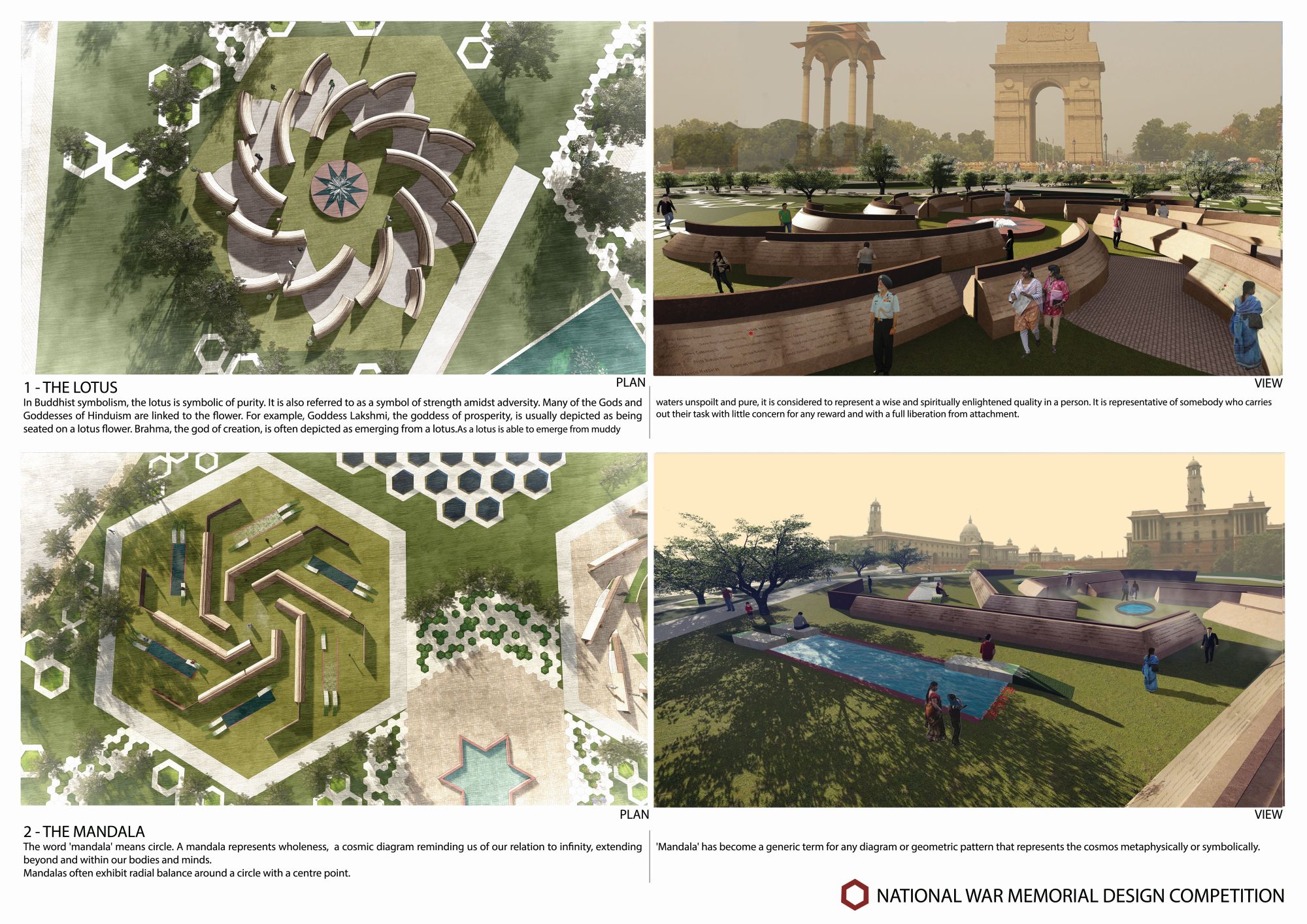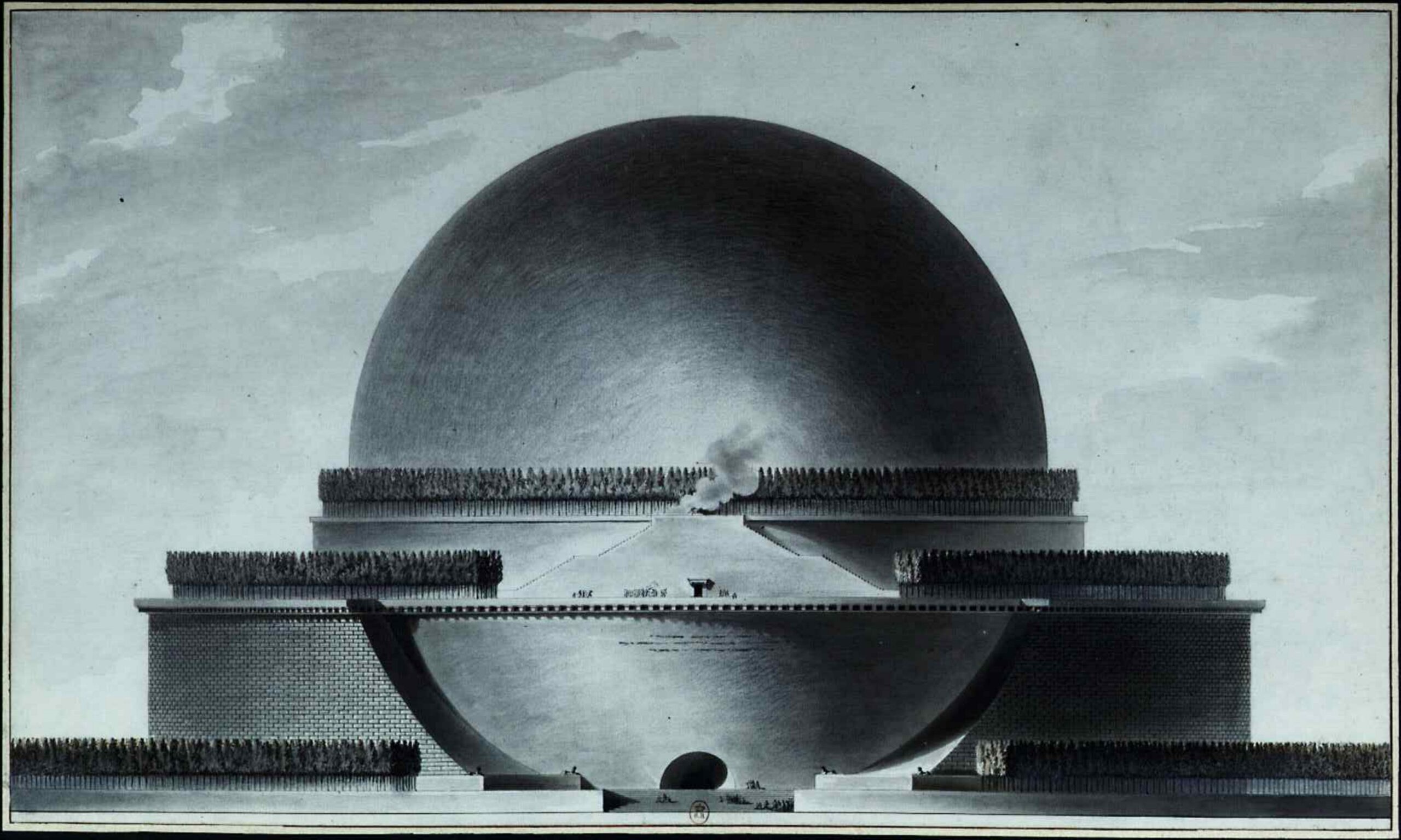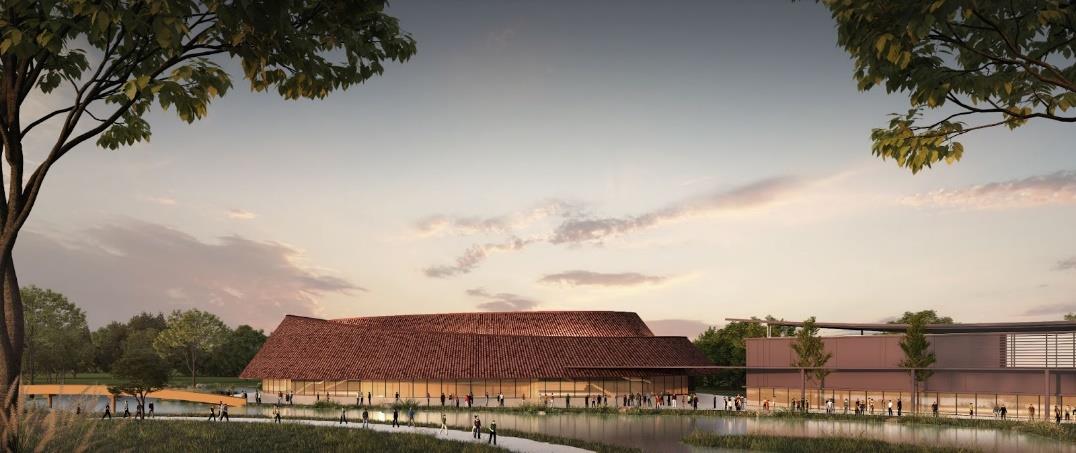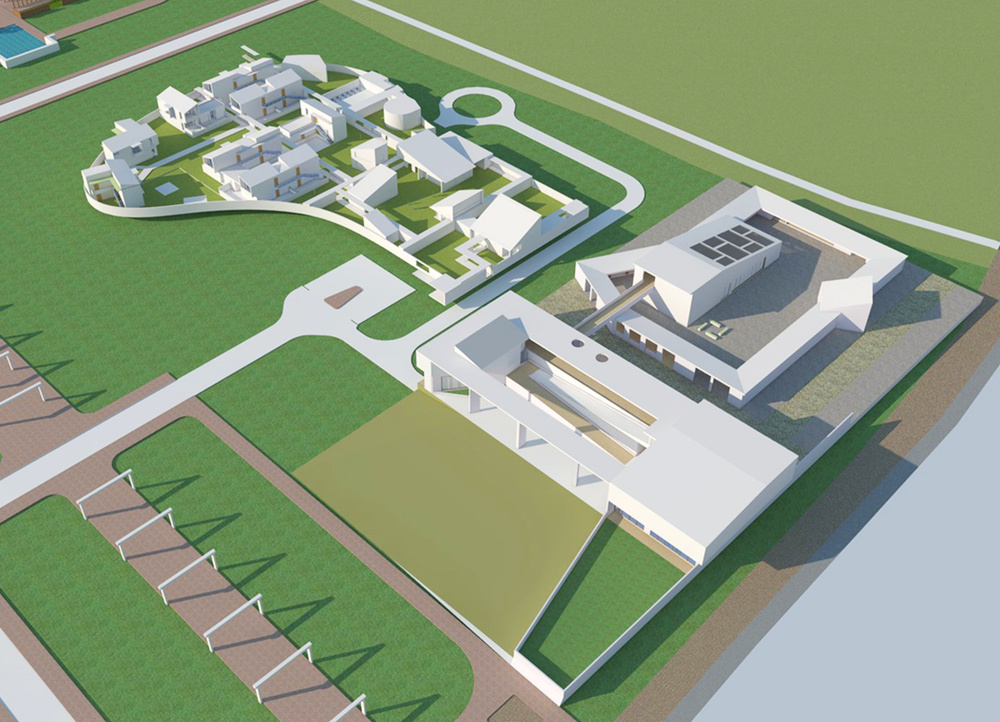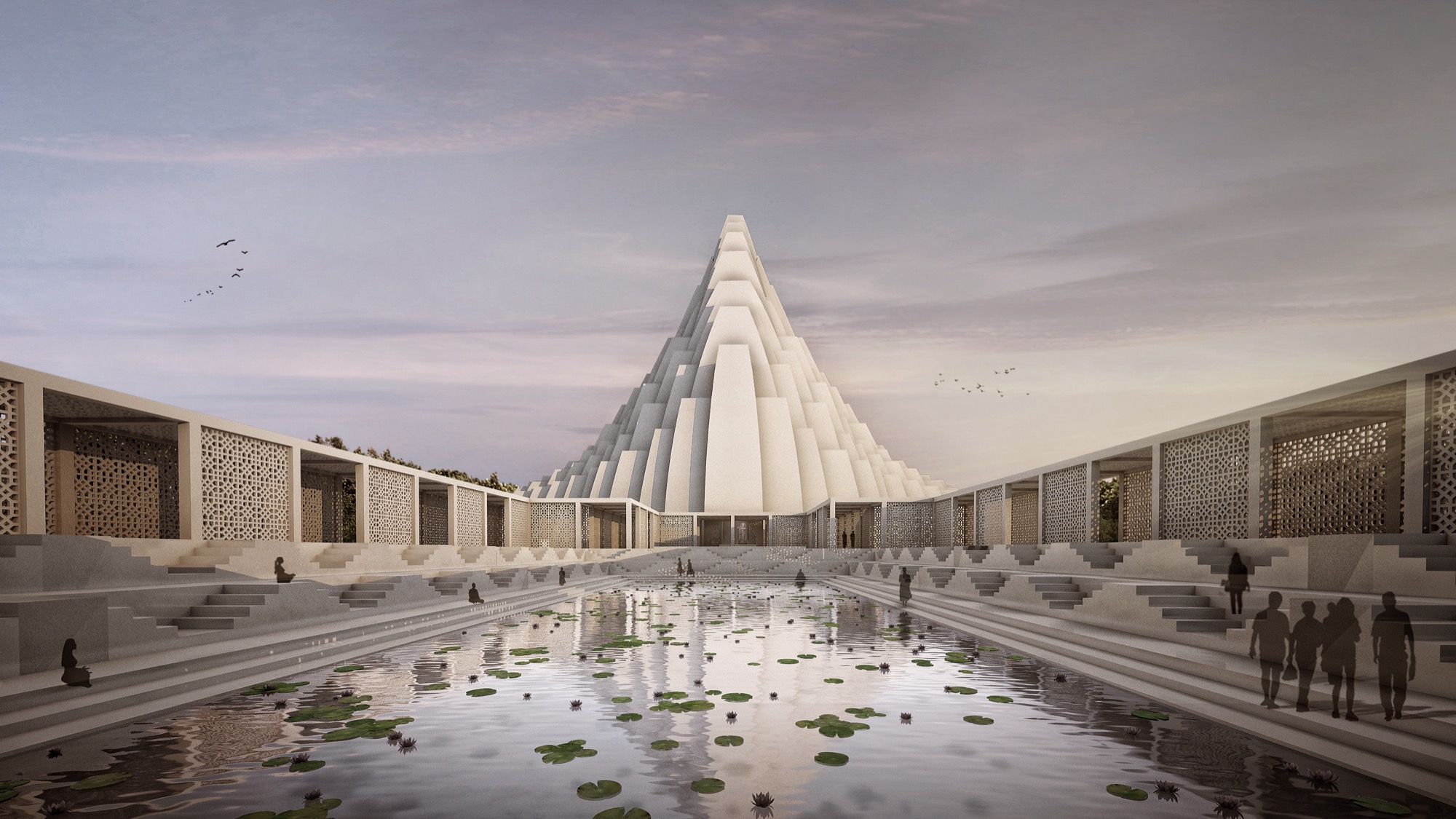
Not many works of architecture hold as much weight and significance as a memorial. These powerful monuments stand as symbolic spaces, evoking solemnity, solidarity, and reverence. Their spaces represent the gravity of war, evoke memory and commemorate sacrifice. They bring a persons attention to the historic events that left a mark on the Nation, sharing knowledge that will integrate and consolidate the community nationally, and unite people with similar experiences. They serve as spaces that inform, that remember, that salutes, that educate and encourage awareness and understanding. As public spaces with a significant cultural identity, it is important that they relate to their context and surroundings. Critical attention to craft and material is necessary, as they dictate the way a person will experience the spaces within the memorial.

CONCEPT
– RELEVANCE TO TIME, PLACE AND CONTEXT
– SYMBOLS OF THE COSMOS AND ETERNITY
Our design arises from the solemn, ceremonial, historical and nationalistic sentiments of the Rajpath and its architectural design. The proposed war memorial has been designed to merge with the ceremonial public spaces of the Rajpath and fit into its space as if it were meant to be there always.
The challenge was to enhance the experience of a war memorial for the general public to feel pride, humility, and oneness as citizens of India by being engaged in the experience, and a place for those who have lost a loved one to remember in quiet dignity.
The plan reflects Lutyens’ “transcendent fervour for geometric symmetry,” through sightlines and axes.
The National War Memorial, situated in the heart of Lutyens Delhi , will perfectly fit with Lutyens’ vision, and will bring a sense of harmony to the existing hexagonal geometrical plan.
Concept
The design is made to fit into the surrounding landscape and takes its inspiration from elements already existing. It is a subtle design that draws the observer to the inscriptions, engravings, and murals celebrating battle victories and sacrifices. The design is used as a tool to invoke the pride of citizens, the highest respect for the Armed Forces and salutations to the departed.
The memorial comprises six hexagons symbolising and communicating through its shapes the idea of the cosmos and eternity, and is designed at a human scale, for compassion often works best at smaller scales.
The memorial walls have been made with sandstone and granite, which is the same as the materials used to build the India Gate, so as to compliment the monument.
It is a subtle design that draws the observer to the inscriptions, engravings, and murals celebrating battle victories and sacrifices.
The Hexagon
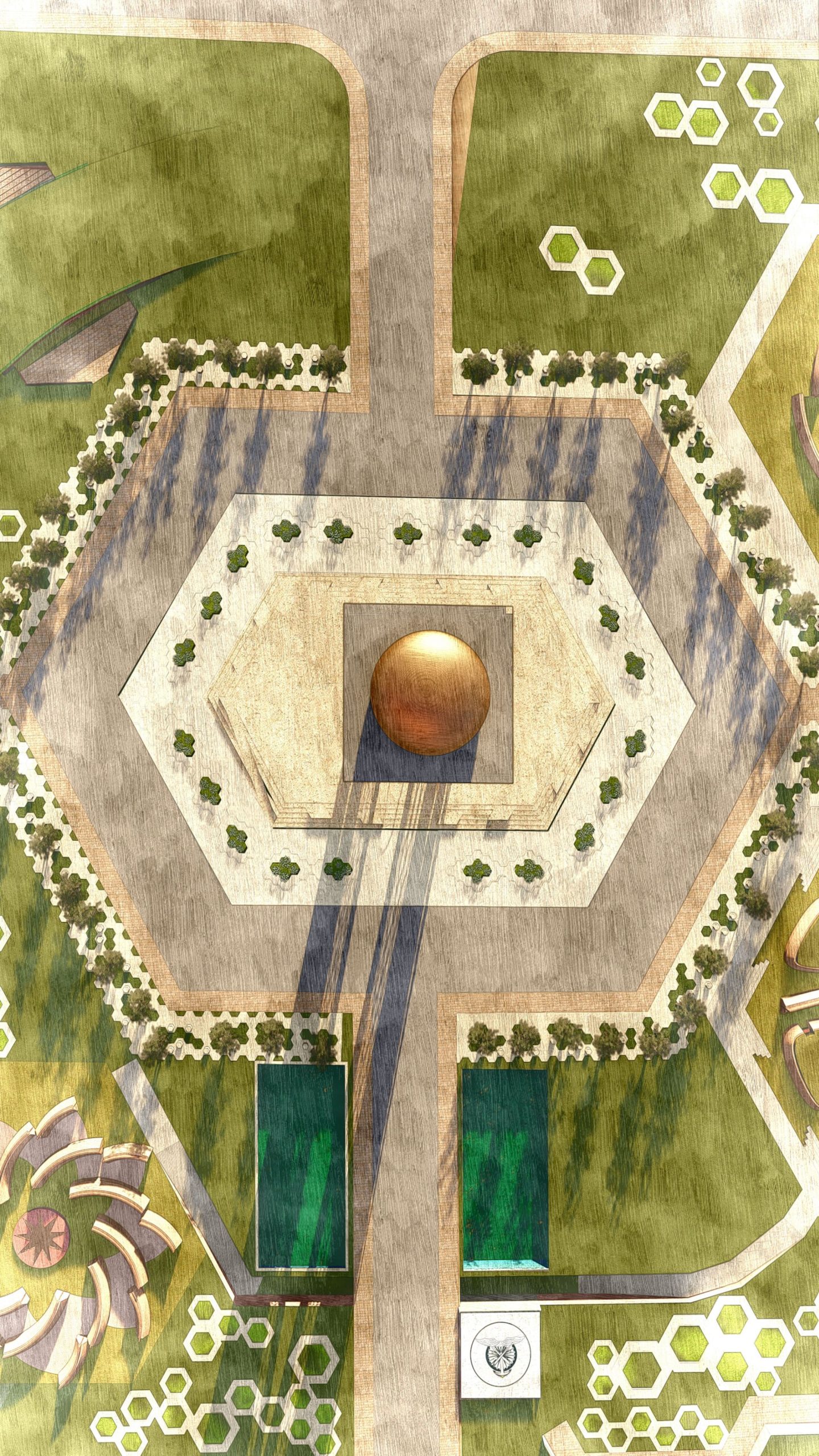
The location for the National War Memorial is set in the hexagonal lawns of the India Gate. The space in itself forms a powerful visual element that has built up a discernible association in the public mind. In keeping with this memory of a very significant place in Indian history, we have used this form as a primary element of our design.
The hexagon is a six-sided figure that symbolises completeness and was acknowledged by Pythagoras, the Greek philosopher, to be the perfect number.
The six sides of the hexagon are also symbolic: “The cycle of life has six periods which are birth, growth, decay, health, absorption and metamorphosis. The Pythagoreans referred to the hexad as the form of forms, the articulation of the universe, and the maker of the soul.
The sixth sense is also symbolic of the number 6. When the sixth sense if developed or activated, it helps us to experience the subtle world or subtle dimension also known as “a spiritual experience.”
The hexagon is one of the geometric shapes that occur in nature, found in the formation of the honeycomb, it is associated with bees and their well-organised way of living.
“Six is a number perfect in itself, not because God created all things in six days, rather, the converse is true – God created all things in six days because the number is perfect.” – Saint Augustine, The City of God.
Symbols are important because they facilitate communication and identification of ideas and other concepts based on what those symbols represent.
The Mandala

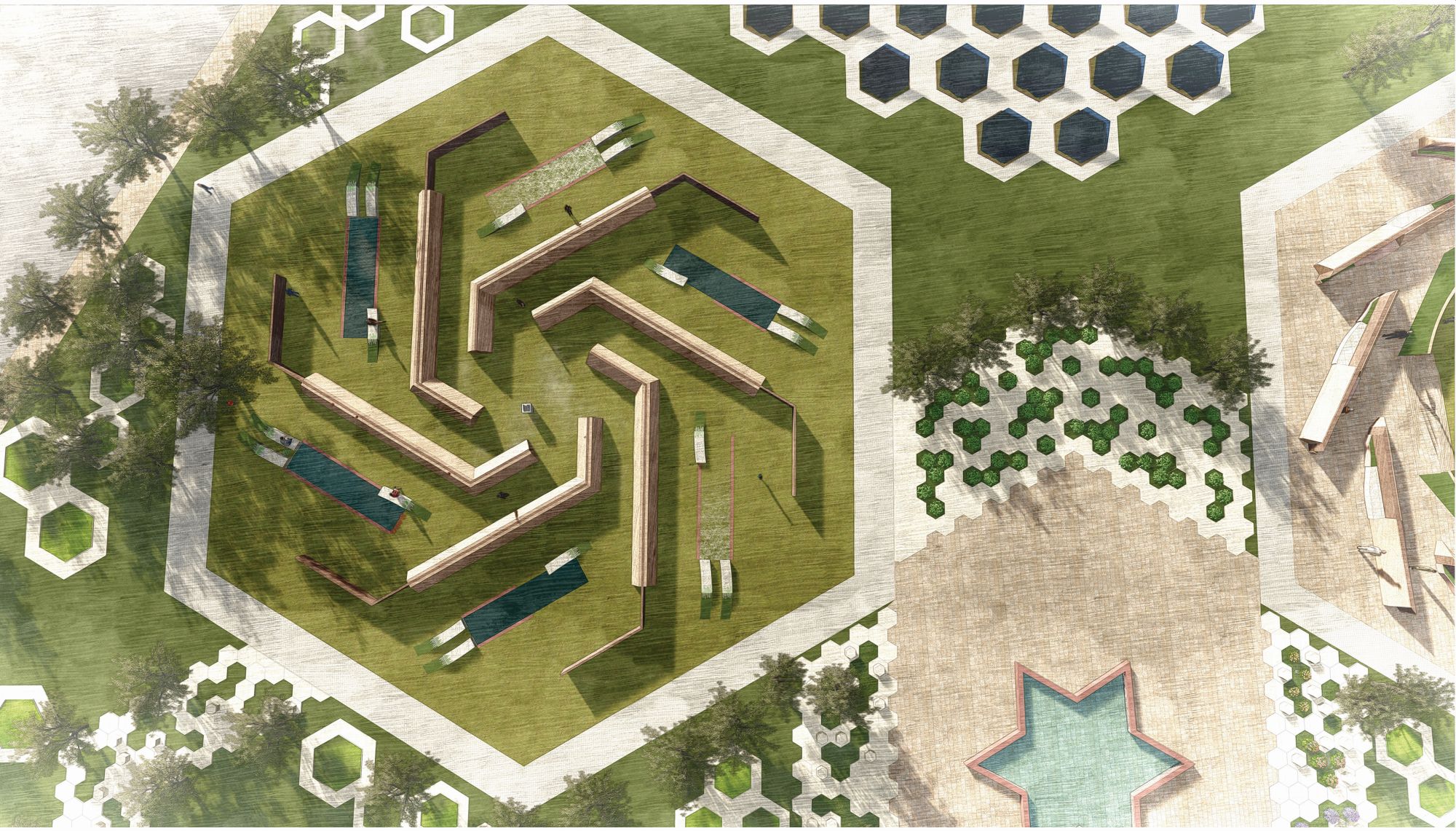
The word ‘mandala’ means circle. A mandala represents wholeness, a cosmic diagram reminding us of our relation to infinity, extending beyond and within our bodies and minds.
Mandalas often exhibit radial balance around a circle with a centre point. ‘Mandala’ has become a generic term for any diagram or geometric pattern that represents the cosmos metaphysically or symbolically.
The Lotus

In Buddhist symbolism, the lotus is symbolic of purity. It is also referred to as a symbol of strength amidst adversity. Many of the Gods and Goddess of Hinduism are linked to the flower. For example, Goddess Lakshmi, the goddess of prosperity, is usually depicted as being seated on a lotus flower. Brahma, the god of creation, is often depicted as emerging from a lotus.
As a lotus is able to emerge from muddy waters unspoilt and pure, it is considered to represent a wise and spiritually enlightened quality in a person. It is representative of somebody who carries out their task with little concern for any reward and with a full liberation from attachment.
The Chakravyuha
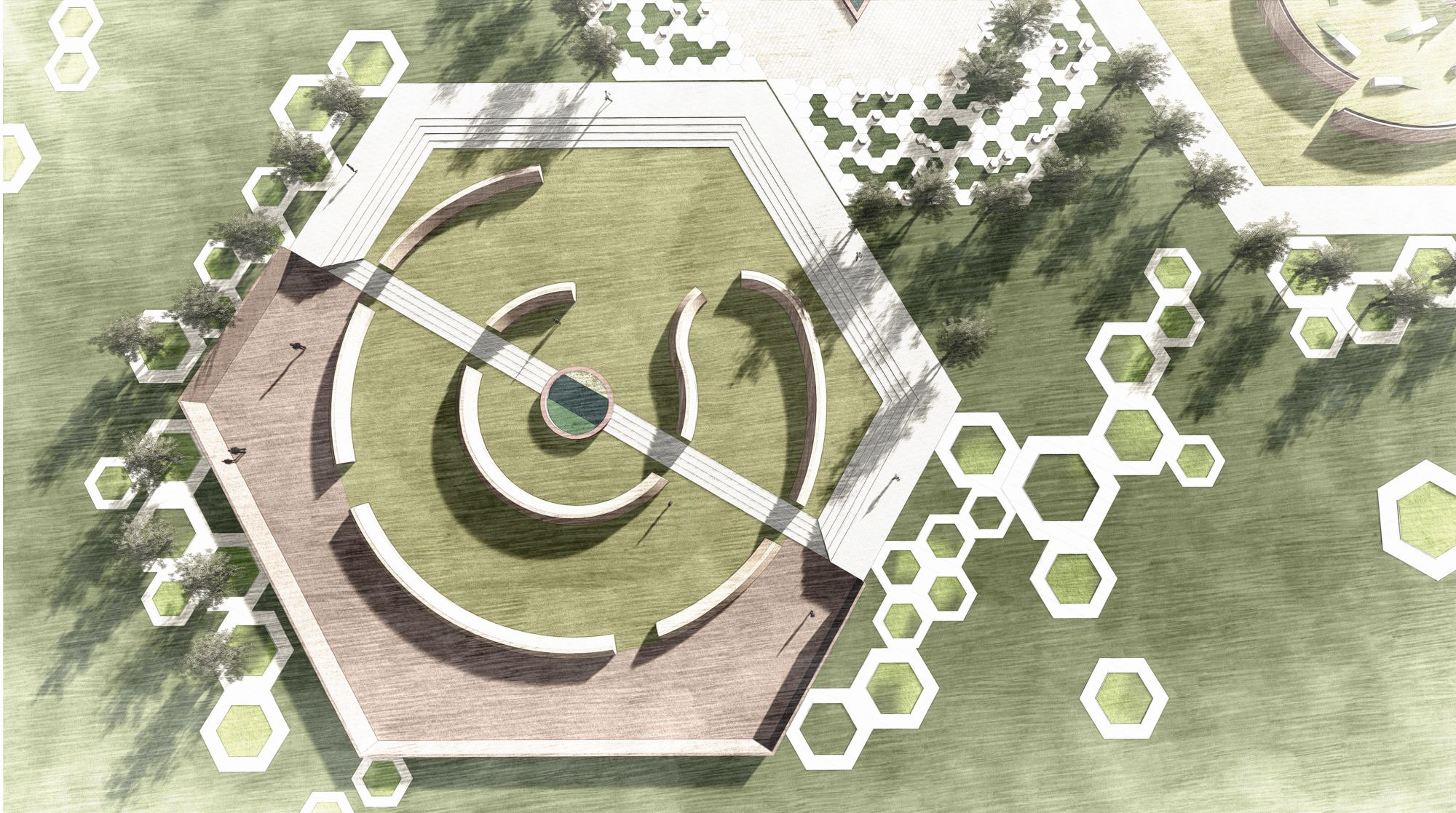

The Chakravyuha is considered one of the most brilliant and deadliest military formations. “Chakra” means spinning wheel and “vyuha” means formation. Chakravyuha is the puzzled arrangement of soldiers that keeps moving in the form of a spinning wheel. The Chakravyuh formation is similar to a typhoon that moves across the battlefield to destroy everything that it encounters.
The Shell


In Buddhism and Hinduism, the conch shell is used as a musical instrument and as a method of carrying water for rituals. It is seen in the hands of almost all gods and goddesses, whenever they were happy or going off to war.
The spiral formation inside the conch is symbolic of infinity. The conch shell’s spiral form and relation to water cause it to represent the beginning of existence.
The Spiral
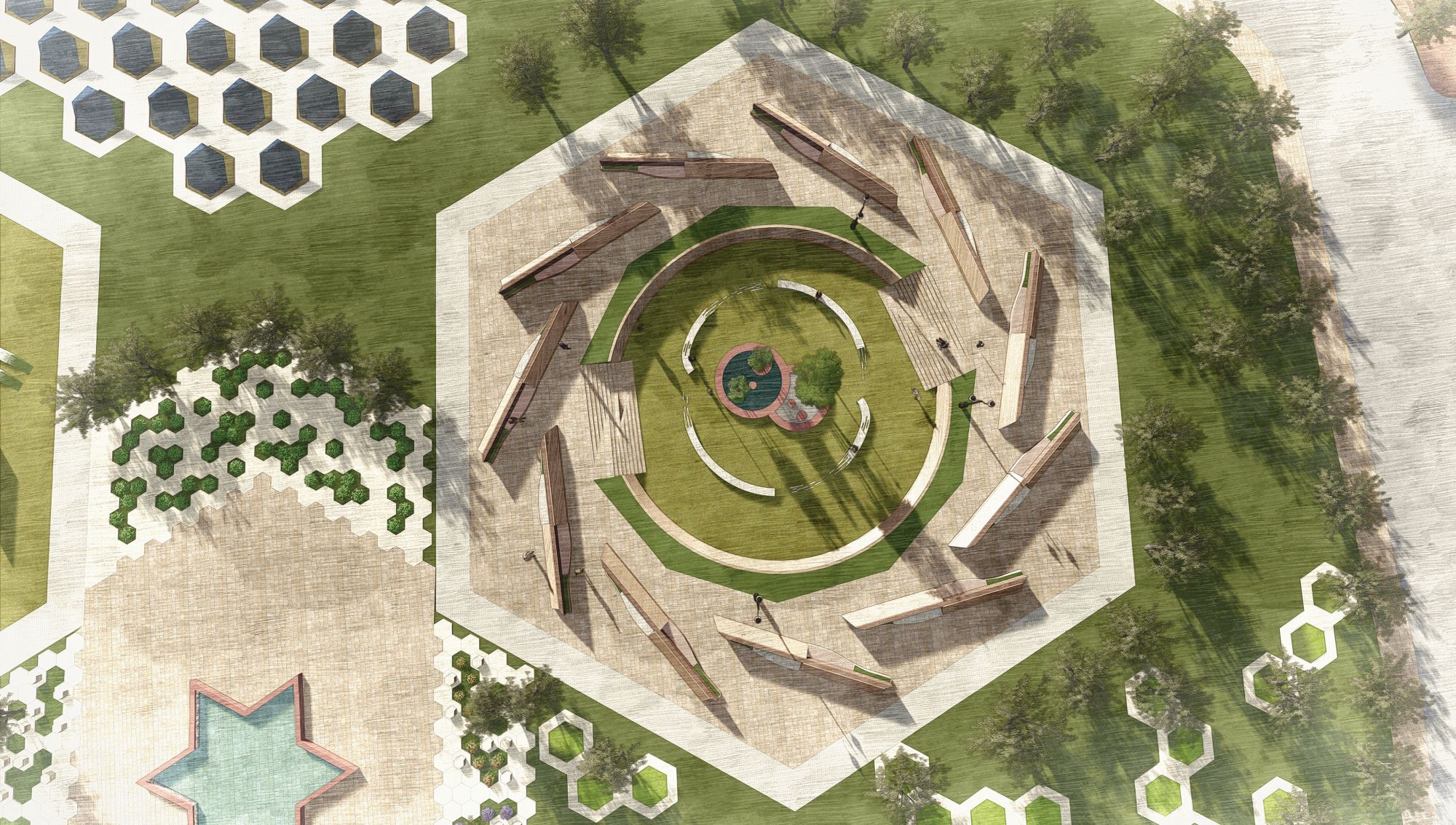
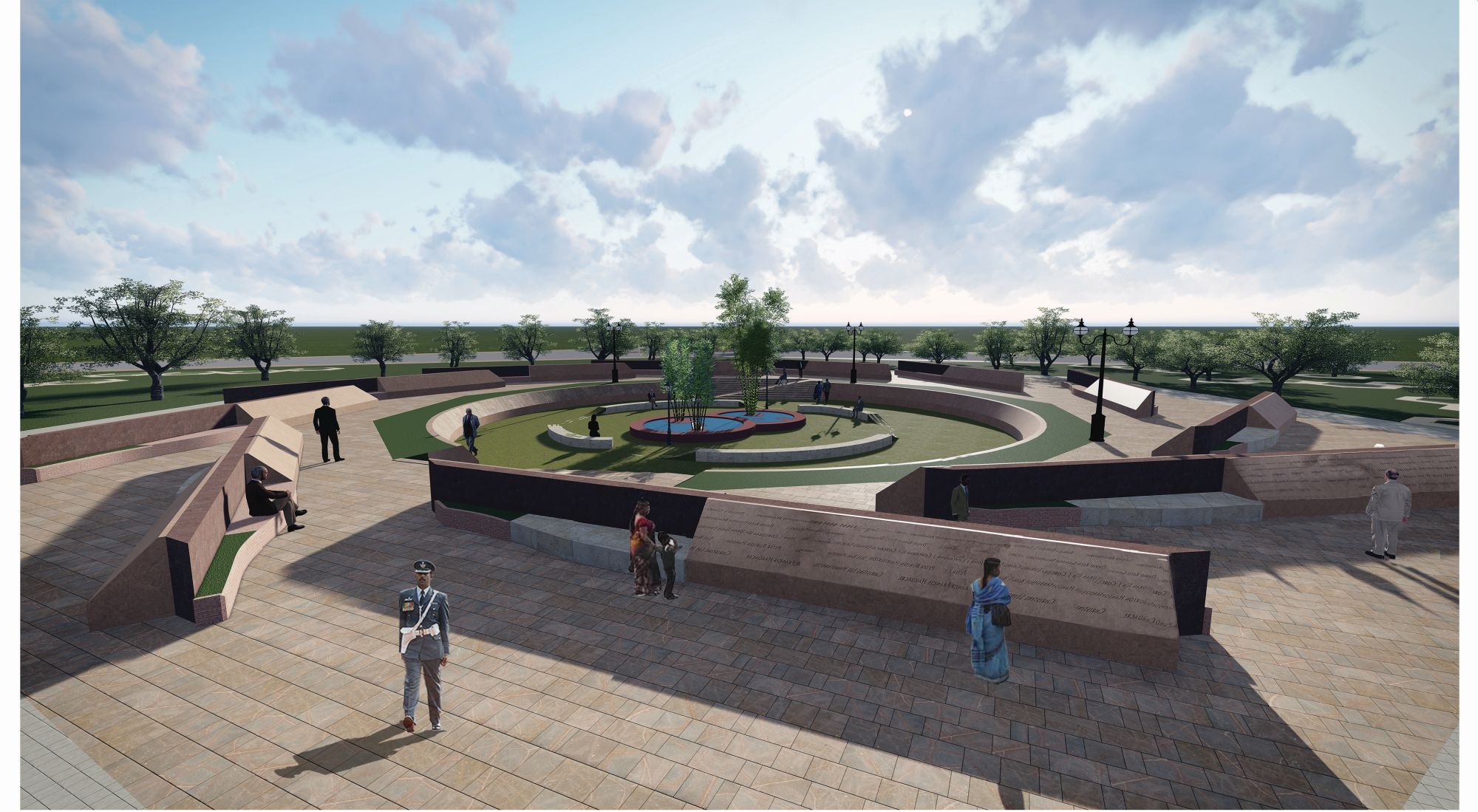
Spirals are one of the oldest symbols symbolising cosmic rhythms. The ancient spiral could represent the way the universe would evolve. It is in the ancient of the divine.
The spiral is within the strands of our DNA, flower petals, a spiral shell and the shape of our galaxy.
The Flower of Life


The flower of life is the modern name given to a geometrical figure composed of multiple evenly-spaced, overlapping circles that are arranged so that they form a flower-like pattern within a sixfold symmetry like a hexagon. The perfect form, proportion and harmony of the flower of life has been known to philosophers, architects and artists around the world. Pagans consider it to be sacred geometry containing ancient religious value depicting the fundamental forms of space and time.
The Memorial Arch
Along the central axis of the Rajpath, perhaps one of the most important roads in India, and past the India Gate and the Chatri, we have located the focal point of the war memorial, the memorial arch, as a befitting place for one of the most important memorials of the country.
DESIGN SCALE
The intent of the design was to build a memorial arch that does not overshadow the India Gate and frames the Chatri within its arch. In its scale, it is larger than the Chatri, which fits within its arch. The shape of the arch is narrow and tall, and derived from the design idea of framing the Chatri, a parabolic arch.
DESIGN FORM
The form of the memorial arch comprises four arches combining to hold a dome above, and was arrived at as an architectural language that complements its location, and with the capability of holding its position in time. The intention is to create a memorial that represents its time in history as a seamless continuation from its past.
DESIGN INTENT

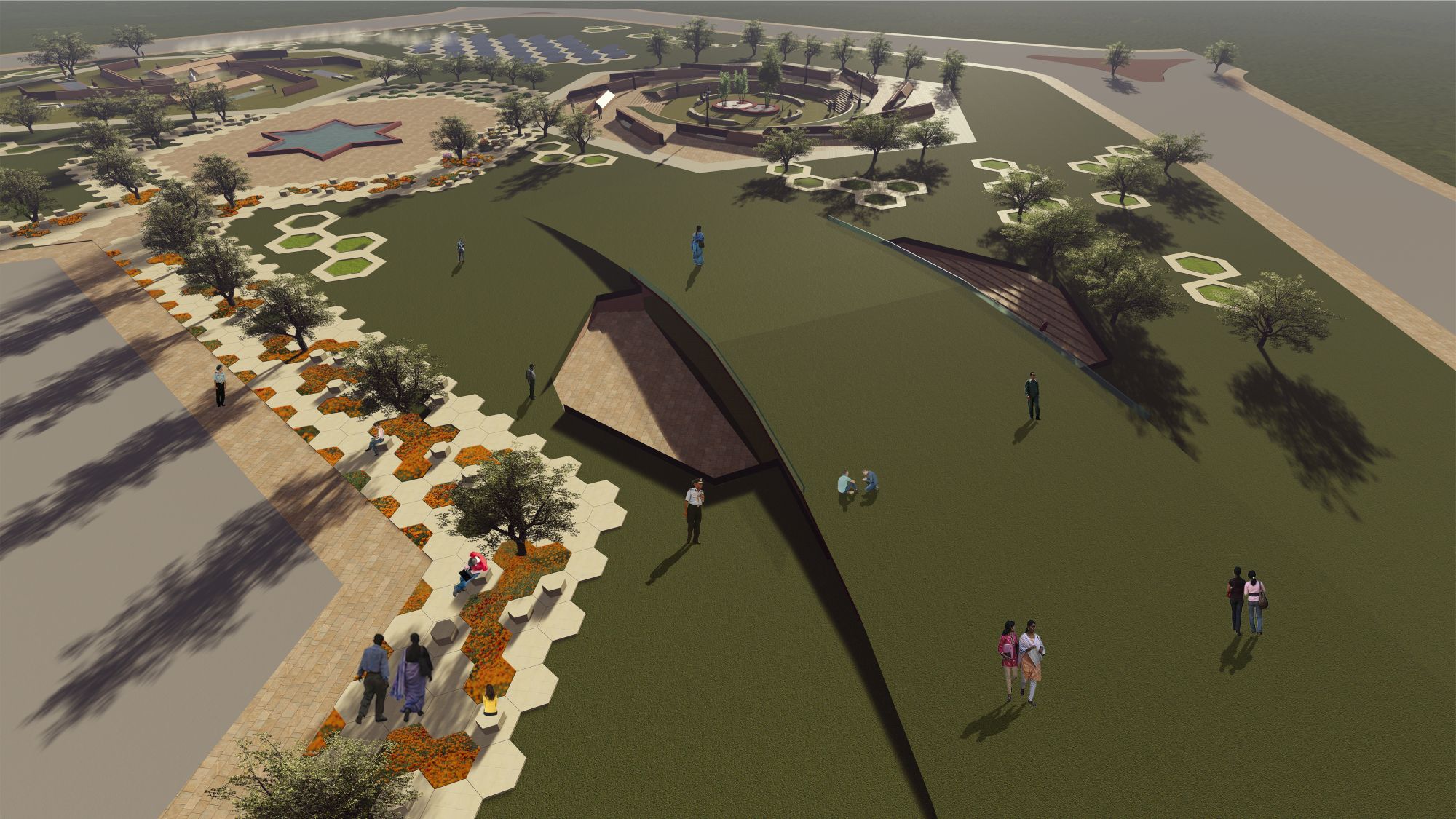
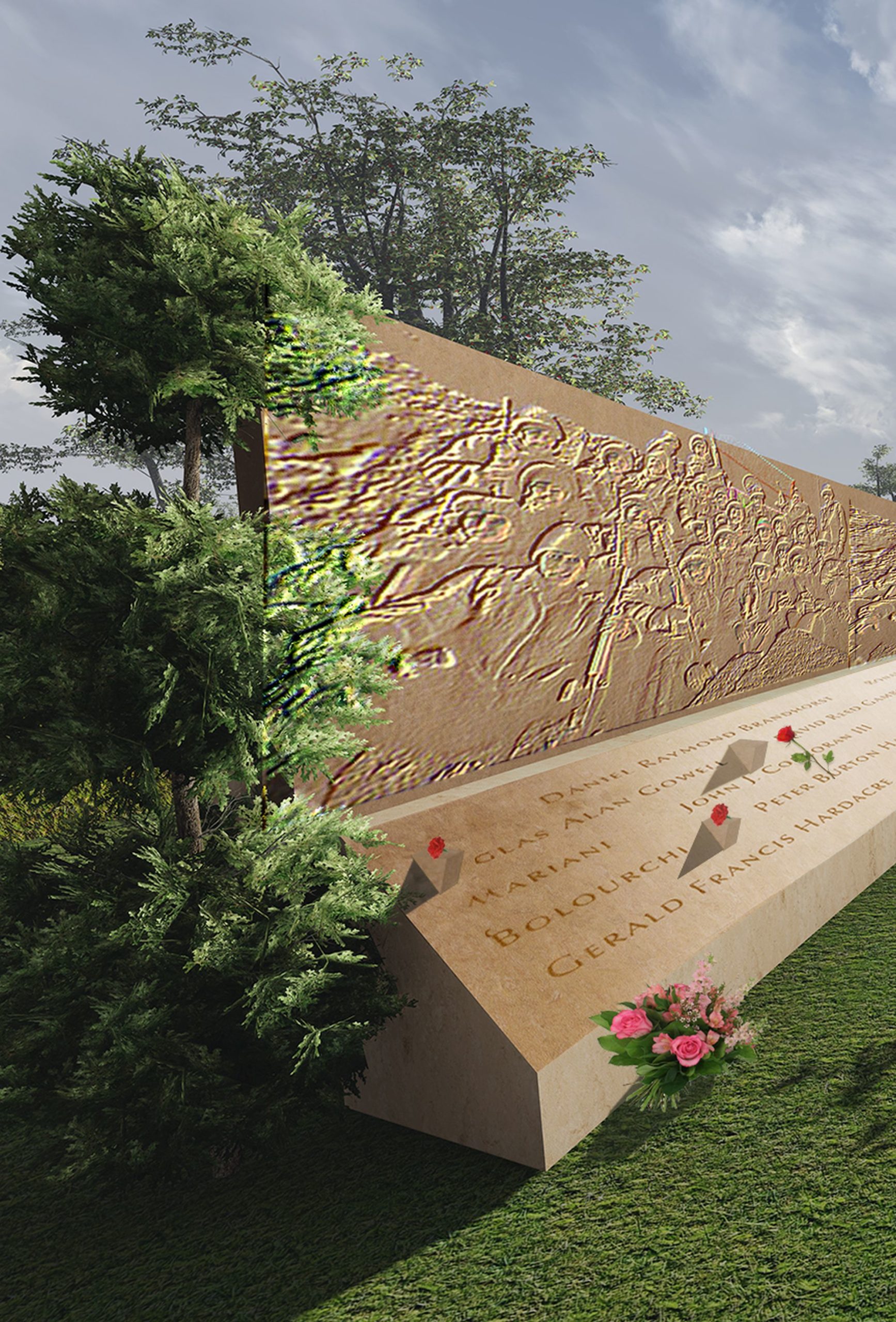

It seemed important that the memorial does not represent a nation stuck in time, but a nation whose outlook is progressive and stands as a testimony to the future. The design that evolved was four parabolic arches, narrow at its base and wider at its apex, forming a chatri or chajja at its peak.
The material for the four arches is concrete, tied together by a structural steel grid forming hexagonal patterns to hold heat-reflective laminated glass. The hexagonal pattern has been maintained throughout the design. The concrete arches that holds the copper dome provide a shelter for ceremonies and tributes while allowing visibility throughout the grid-work of steel to an audience beyond the memorial arch itself.
The engraved copper dome, slightly raised from its base, to provide for ventilation, roofs the memorial. The exposed concrete arches, with etchings and pictorial stories draws you into the central point of the Ashoka Chakra in glass.
This central monument, the memorial arch, sits along the main axis and stands on a large podium of 65x35metres in an elongated hexagon shape 1.0 metre above the ground. Open on all four sides, it affords access and visual communication for ceremonies and tributes. The podium is bordered by a paved pathway, that can double up as a space for bigger events.
Leading out from the central memorial arch, is the war memorial covering lawns 2 and 3, with lawn 1 left for future expansion and access to the proposed war museum.

